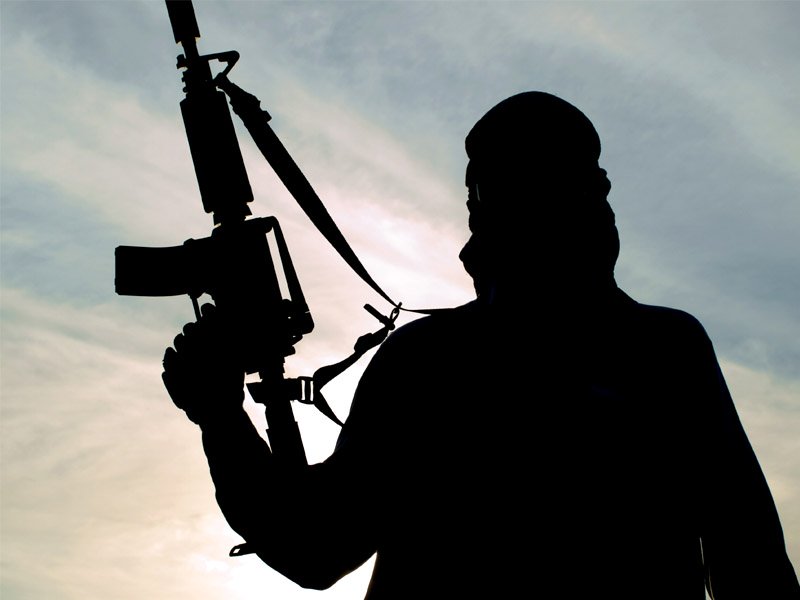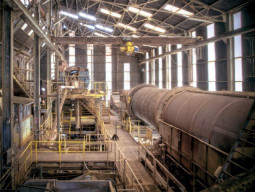
Other terrorism types included sectarian terrorism, ethno-political terrorism and sub-national terrorism.
The security policy was released by the outgoing government on May 31, the last day of the PML-N government’s tenure.
Ideology of terror: Deal signed to build counter narrative
According to the policy, several of the active terrorist groups in the country espoused the stated aim of imposing their interpretation of religion, besides wanting to establish a global caliphate by discrediting democratically-elected governments and terming all civilian and military institutions un-Islamic.
Most such terrorist outfits have already been proscribed or eliminated, but comprehensive action is needed to choke their sources of financing.
Several sectarian outfits originated in Pakistan and continue to maintain a presence, the NISP admitted. They often use violent means to target prominent personalities, festivals, and places of worship belonging to other sects.
The NISP stated that confluence of ethnic identity and politics resulted in violence along racial lines to achieve political and economic gains.
Karachi, it stated, being the country’s largest and most ethnically diverse city, suffered immensely because of such turf battles.
According to the policy, such clashes were often linked with conflicts over real estate, territorial control and constituency gerrymandering.
The policy recognizes that sub-national terrorism – such as the one experienced in Balochistan – remained a persistent challenge for peace and stability in Pakistan.
Pakistan, the policy maintained, suffered a loss of $123 billion over the past 15 years because of terrorism.
Khyber Pakhtunkhwa and FATA suffered the worst losses in the country since Pakistan initiated war against terrorism.
Between the 2005-2012 period, the country suffered 11,862 casualties involving civilians, personnel of security forces and militants, primarily as a result of terrorist activities.
Sindh was rated as the second most violent region in terms of casualties on a per capita basis, although in absolute numbers, the province has been conflict-prone since mid-1980s.
Punjab has seen the least violence in the country in terms of overall fatalities. But the average death toll per terrorist attack in Punjab remains the highest in the nation.
Some sectarian organizations were founded and maintain presence in the province, the document admitted.
Balochistan ranked fourth as far as extremism and violence was concerned. It has traditionally seen violent ethnic conflict, threatening the state.
Gilgit-Baltistan remained largely peaceful; but there was some sectarian violence over there. Azad Kashmir mostly witnessed violence because of cross-border firing along the Line of Control (LoC). Otherwise, the region remained relatively peaceful.
Stressing the need for reforming the criminal justice system, the NISP prioritized this but this largely remained untended during the entire tenure of the PML-N government.
Criminal justice reforms, the policy stated, were essential for establishing rule of law, but shortcoming in this regard necessitated establishment of military courts as a short-term solution. It was essential to overhaul the criminal justice system so that the accused could be prosecuted under civilian dispensation.
It also called for putting in place comprehensive measures to combat terrorism financing through an effective regime for Combating Financing of Terrorism.
Six terrorists killed as Pakistan Army repulse cross border raids: ISPR
The NISP discussed building a national narrative against terrorism, which was largely ignored over the past five years.
It also talked about ensuring registration and regularization of madrassas in a uniform manner.
It stated that provinces would develop legislation for undertaking madrassa reforms. Despite much propaganda, the federal and provincial governments took fewer steps for registration and reforms in religious seminaries.

1732020599-0/BeFunky-collage-(73)1732020599-0-165x106.webp)
1731926127-0/zayn-(1)1731926127-0-165x106.webp)
1732018399-0/BeFunky-collage-(72)1732018399-0-165x106.webp)




1732013598-0/Untitled-design-(15)1732013598-0-270x192.webp)
1732012115-0/Untitled-design-(14)1732012115-0-270x192.webp)







COMMENTS
Comments are moderated and generally will be posted if they are on-topic and not abusive.
For more information, please see our Comments FAQ